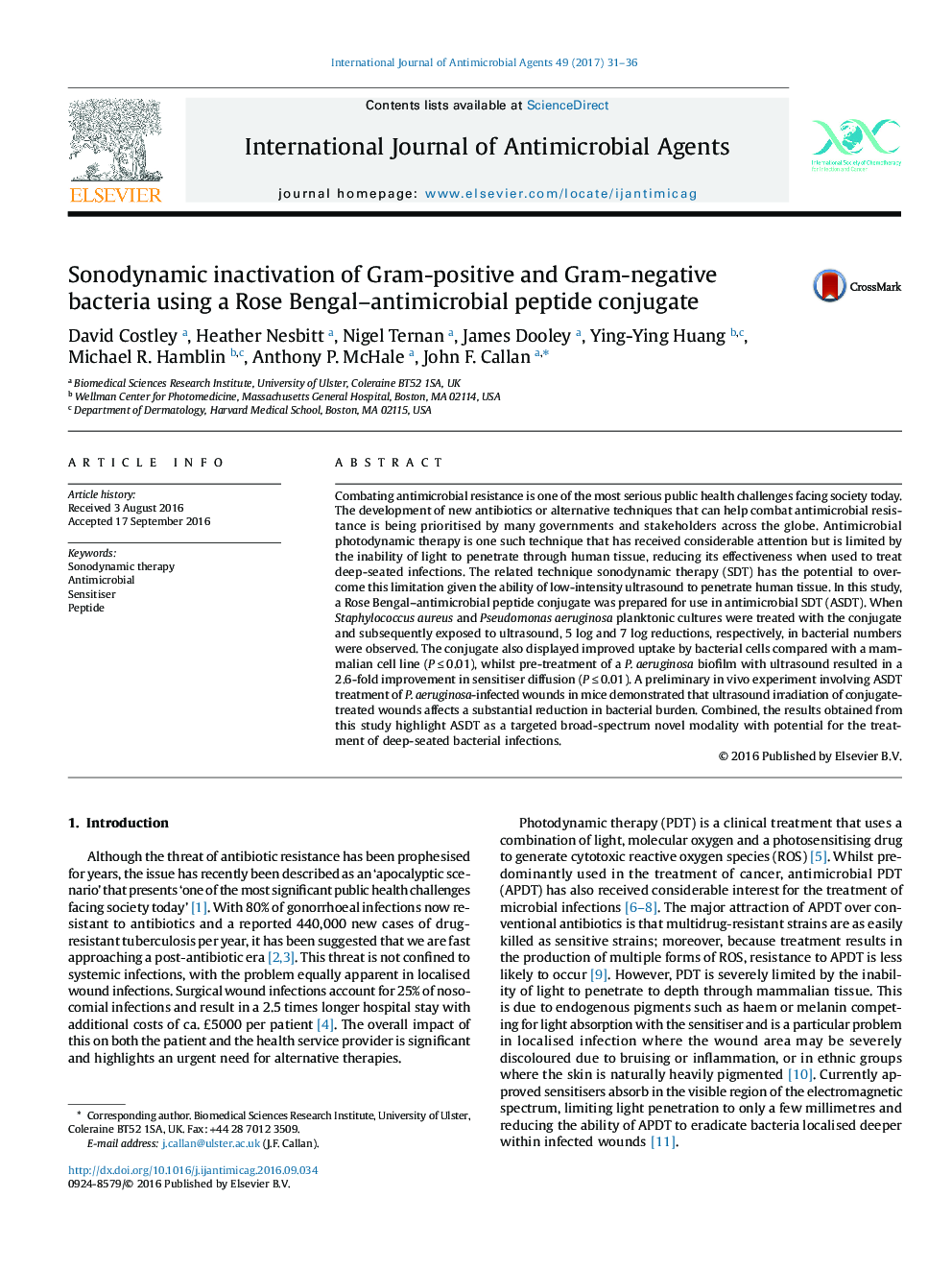| Article ID | Journal | Published Year | Pages | File Type |
|---|---|---|---|---|
| 5667083 | International Journal of Antimicrobial Agents | 2017 | 6 Pages |
â¢Potential use of antimicrobial sonodynamic therapy (ASDT) as antibiotic-free treatment for localised infection.â¢Broad-spectrum efficacy of ASDT using a sensitiser-antimicrobial peptide hybrid.â¢In vivo demonstration of ASDT in a murine model of localised infection.â¢Ability of low-intensity ultrasound to enhance uptake of sensitisers in bacterial biofilms.
Combating antimicrobial resistance is one of the most serious public health challenges facing society today. The development of new antibiotics or alternative techniques that can help combat antimicrobial resistance is being prioritised by many governments and stakeholders across the globe. Antimicrobial photodynamic therapy is one such technique that has received considerable attention but is limited by the inability of light to penetrate through human tissue, reducing its effectiveness when used to treat deep-seated infections. The related technique sonodynamic therapy (SDT) has the potential to overcome this limitation given the ability of low-intensity ultrasound to penetrate human tissue. In this study, a Rose Bengal-antimicrobial peptide conjugate was prepared for use in antimicrobial SDT (ASDT). When Staphylococcus aureus and Pseudomonas aeruginosa planktonic cultures were treated with the conjugate and subsequently exposed to ultrasound, 5 log and 7 log reductions, respectively, in bacterial numbers were observed. The conjugate also displayed improved uptake by bacterial cells compared with a mammalian cell line (Pââ¤â0.01), whilst pre-treatment of a P.âaeruginosa biofilm with ultrasound resulted in a 2.6-fold improvement in sensitiser diffusion (Pââ¤â0.01). A preliminary in vivo experiment involving ASDT treatment of P.âaeruginosa-infected wounds in mice demonstrated that ultrasound irradiation of conjugate-treated wounds affects a substantial reduction in bacterial burden. Combined, the results obtained from this study highlight ASDT as a targeted broad-spectrum novel modality with potential for the treatment of deep-seated bacterial infections.
